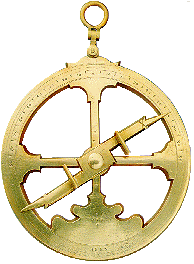By Ken Kennedy
Another phenomenon within the upper atmosphere is the occurrence of Noctilucent Clouds. These high altitude clouds were not frequently seen by DAS members twenty or thirty years ago with perhaps four or five reported sightings each year. In more recent years, however, the frequency of these clouds has increased dramatically and in 2007 was reported on 73 nights during the summer. The BAA Aurora Section also co-ordinates and records observations of Noctilucent Clouds and this has been the responsibility of Ken Kennedy since 2006. There is now a large network of observers throughout Western Europe and in the UK who send reports of sightings to Ken directly or through Tom McEwan's website.
Dundee is at an almost ideal latitude to observe Noctilucent Clouds (NLC) during the summer months. They are normally only seen between the end of May and the first week or two in August. The name simply means night luminous and these delicate pearly white or bluish clouds may be seen towards the north after the Sun has set and when it is more than six degrees below the horizon (see images in the Gallery section). They can remain in the northern sky all night and fade in the dawn light.
The clouds may only be a few degrees above the horizon or, sometimes, can rise to more than sixty degrees. They often form patterns of bands or herringbone waves. NLC are the highest clouds on Earth at an altitude of 82km and form in the extremely cold mesosphere from small amounts of water vapour forming ice round tiny particles which may be meteoric dust.
NLC were first reported in 1885 and seem to have been increasing in frequency ever since. The past two years, 2006 and 2007, have had displays on almost every night in June and July. Thirty or forty years ago observers considered themselves fortunate to see four or five displays each year. Some scientists have suggested that NLC may be a barometer of global warming as it has been reported that atmospheric methane may be increasing and dissociating into water vapour at high altitude thus increasing nucleation of microscopic particles with ice.
These clouds are a beautiful and fascinating sight which can easily be seen without the need for telescopes or binoculars but recording their presence may be useful in determining possible changes in climatic conditions. Anyone interested in learning about NLC, or indeed anyone who would like to report seeing them during 2008 can contact Ken Kennedy, co-ordinator for NLC observations for UK and Western Europe, HERE (opens e-mail client)
A form to report observations which can be returned to me either as an e-mail or hard copy can be found at the top of the page using the navigation buttons. The websites given below will help the observer to recognise the forms of NLC which may be seen but I should emphasise that detailed observations of forms should not put potential observers off. All that is required until some experience is gained is the date, time UT, and location of the sighting. The date should be given as a double date, e.g. 10/11 July 2008, even if the sighting is entirely before or after midnight . The time of first noticing NLC should be recorded and the time they disappear, or the time observations cease. With experience and practice, the height and azimuth of displays can be estimated.
Dundee Astronomical Society has had a special association with the observation of upper atmospheric phenomena since its earliest days. Dave Gavine, Harry Ford and several others made a special study of the Aurora in the late 1950s and this continues to this day with Dave Gavine having taken over as Director of the BAA Aurora Section in 2006 from another of our Honorary Members, Ron Livesey. Ron Livesey remains an Assistant Director of the section as does Ken Kennedy who was also one of the early aurora observers.
Noctilucent Clouds

